How To Bottle Feed
48 hours of research 6 minute read
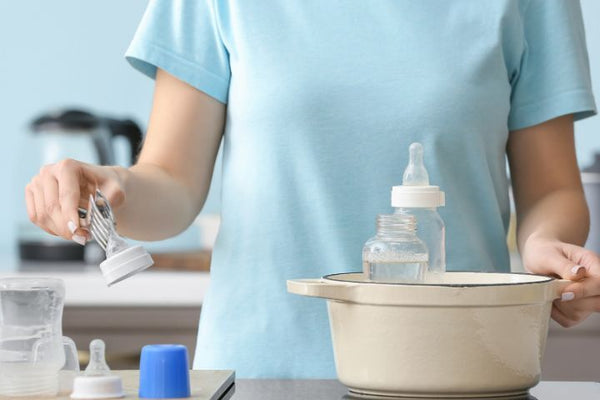
Bottle feeding is a significant aspect of caring for infants, and mastering this skill involves understanding various techniques and considerations. This guide covers key topics related to bottle feeding, from paced feeding methods to addressing common challenges, and the importance of maintaining hygiene through sterilizing bottles.
Understanding Paced Bottle Feeding
Paced bottle feeding is a method that replicates breastfeeding, ensuring a more natural and comfortable feeding experience for infants.
Technique:
- Hold the bottle horizontally.
- Allow the baby to suck, swallow, and breathe at their own pace.
- Pause and gently remove the bottle when the baby shows signs of fullness or needs a break.
Benefits:
- Reduces the risk of overfeeding.
- Encourages self-regulation in the baby.
Paced Bottle Feeding Method
Components of Paced Feeding:
- Mimicking breastfeeding positions.
- Holding the bottle horizontally.
- Responding to baby's cues for pauses.
Tools for Paced Bottle Feeding:
- Paced feeding bottles with slow-flow nipples.
- Using paced feeding apps for guidance.
Benefits of Paced Bottle Feeding:
- Establishes a comfortable and natural feeding experience.
- Supports breastfeeding mothers by reducing nipple confusion.
Common Challenges in Paced Bottle Feeding
Baby Rejects the Bottle:
- Solution: Experiment with different bottle types and nipple flows.
Baby Shows Signs of Frustration:
- Solution: Adjust pacing and bottle angle; ensure a comfortable feeding environment.
Difficulty Establishing a Rhythm:
- Solution: Be patient, practice, and seek guidance from a lactation consultant if needed.
Baby Squirms and Cries While Bottle Feeding
Possible Causes:
- Incorrect nipple flow.
- Discomfort due to gas or reflux.
- Bottle or nipple incompatibility.
Solutions:
- Experiment with different nipple flows.
- Burp the baby frequently during feeding.
- Choose bottles designed to reduce gas and reflux.
If Bottle Feeding Takes Too Long
Concerns:
- Tooth decay risk.
- Potential interference with oral motor skill development.
- Increased risk of overfeeding and obesity.
Preventive Measures:
- Introduce sippy cups or regular cups around six months.
- Limit bottle use during sleep or nap time.
Overcoming Challenges in Paced Bottle Feeding
Gradual Transition:
- Gradually introduce paced bottle feeding, allowing both parent and baby to adjust.
Professional Guidance:
- Consult with a lactation consultant for personalized advice and troubleshooting.
Peer Support:
- Connect with other parents practicing paced bottle feeding for shared experiences and tips.
Self-Feeding Bottle
A self-feeding bottle is designed to encourage a baby to hold and manipulate the bottle independently.
Features:
- Ergonomic design for easy gripping.
- Lightweight materials for comfortable handling.
Benefits:
- Promotes fine motor skill development.
- Fosters independence during feeding.
Side-Lying Bottle Feeding
Side-lying bottle feeding involves positioning the baby on their side during feeding.
Technique:
- Place the baby on a firm surface.
- Hold the bottle at a 45-degree angle.
- Ensure the nipple is always filled with milk to prevent air intake.
Benefits:
- Allows for a relaxed feeding experience.
- Mimics breastfeeding position.
The Importance of Sterilizing Bottles
Sterilizing bottles is a vital step in ensuring your baby's health. Newborns and infants have developing immune systems, making them more susceptible to infections and illnesses. Here's why sterilizing bottles is so important:
1. Eliminating Harmful Microorganisms
Bottles, nipples, and other feeding equipment can harbor harmful bacteria and pathogens. Sterilization kills these microorganisms, reducing the risk of infections, particularly for babies with weaker immune systems.
2. Preventing Digestive Issues
Improperly cleaned bottles can lead to digestive problems in infants. Sterilization removes bacteria that can cause stomach discomfort and other health issues.
3. Ensuring Peace of Mind
Sterilizing bottles provides peace of mind for parents. Knowing that your baby's feeding equipment is free from harmful germs can alleviate worries and allow you to focus on your child's well-being.
Now that you understand the importance of sterilizing bottles let's explore the various methods and essential items you'll need for successful bottle feeding.
Methods of Sterilizing Bottles
There are several effective methods for sterilizing baby bottles, each with its advantages and disadvantages. The choice of method largely depends on your preferences, lifestyle, and the equipment you have at your disposal. Here are the most common methods:
1. Boiling Water
Boiling water is a simple and cost-effective way to sterilize bottles. Here's how to do it:
- Wash the bottles: Start by washing the bottles, nipples, and other feeding equipment with hot, soapy water. Rinse them thoroughly to remove any detergent residue.
- Fill a pot with water: Fill a large pot with enough water to submerge all the bottles and accessories.
- Boil the water: Place the bottles and accessories in the pot, ensuring they are completely submerged. Bring the water to a rolling boil and maintain it for at least 5 minutes.
- Remove and let them cool: After boiling, use tongs to remove the items from the water. Position them on a tidy, dry surface for cooling.
Pros: This method is affordable and straightforward.
Cons: It can be time-consuming, and repeated boiling might cause wear and tear on plastic bottles and accessories.
2. Electric Steam Sterilizers
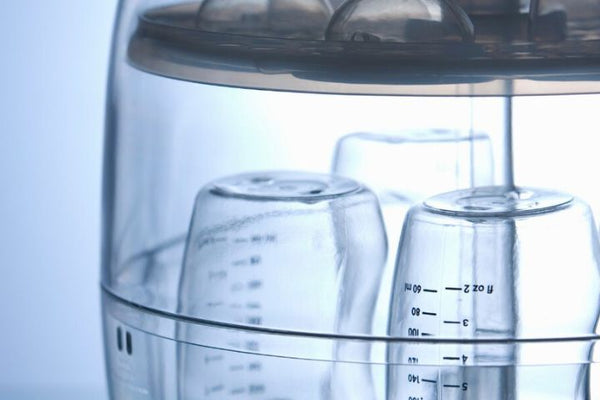
Electric steam sterilizers are convenient appliances designed specifically for sterilizing baby bottles. Here's how they work:
- Wash the bottles: As with other methods, start by cleaning the bottles, nipples, and other equipment.
- Place items in the sterilizer: Load the sterilizer with the washed items. Follow the manufacturer's instructions for proper placement.
- Pour water: Empty the suggested volume of water into the sterilizer's container.
- Turn it on: Plug in the sterilizer and start the sterilization cycle. The machine uses steam to kill bacteria and germs.
- Remove and let them cool: Once the cycle is complete, carefully remove the sterilized items and let them cool.
Pros: Electric steam sterilizers are efficient and easy to use. They typically offer quick and precise sterilization.
Cons: These devices can be relatively expensive, and you need access to electricity.
3. Microwave Steam Sterilizers
Microwave steam sterilizers provide a more affordable alternative to electric steam sterilizers.
Here's how to use them:
- Wash the bottles: Clean the bottles and accessories thoroughly.
- Place items in the sterilizer: Load the sterilizer with the washed items, following the manufacturer's guidelines.
- Add water: Add the recommended amount of water to the sterilizer.
- Microwave: Put the sterilizer in the microwave and follow the instructions for microwave settings. Typically, it takes around 2-8 minutes, depending on your microwave's wattage.
- Remove and let them cool: After microwaving, carefully take out the sterilized items and let them cool.
Pros: Microwave steam sterilizers are budget-friendly and provide fast sterilization.
Cons: You need access to a microwave, and the capacity may be limited based on the sterilizer's size.
4. Chemical Sterilization
Chemical sterilization involves using a sterilizing solution or tablets to disinfect bottles. The most common chemical sterilization method is:
- Wash the bottles: As always, begin by washing the bottles and accessories with warm, soapy water.
- Prepare the solution: Mix the sterilizing solution or tablet with water according to the manufacturer's instructions.
- Submerge items: Place the cleaned items in the sterilizing solution. Ensure they are fully immersed.
- Soak for the recommended time: Leave the items in the solution for the specified duration, typically around 15-30 minutes.
- Remove and rinse: After soaking, remove the items and rinse them thoroughly with cool, boiled water to eliminate any residual chemicals.
Pros: This method is versatile and suitable for sterilizing items on the go, but it does require extra care in rinsing to remove chemical residues.
Cons: It can be time-consuming and may involve the purchase of sterilizing tablets or solutions.
Top Formula Choices for Bottle Feeding Success
When it comes to bottle feeding, selecting the right formula is just as important as mastering the feeding technique. The formula you choose can have a significant impact on your baby’s health, growth, and overall well-being. With a variety of options available, it can be overwhelming for parents to decide which one is best. To help simplify this decision, we’ve highlighted three popular formulas that cater to different needs and preferences. These formulas not only provide the essential nutrients your baby needs but also offer unique benefits that make bottle feeding a smoother experience.
✓ 100% Organic formula
✓ With Added Prebiotics and Probiotics
✓ HiPP's most popular formula
Check PricePopular With Parents Because: HiPP Dutch formula is a popular choice among parents due to its high-quality organic ingredients. Sourced from biodynamic farms, this formula is designed to be gentle on your baby’s digestive system, making bottle feeding more comfortable and reducing the risk of digestive issues. HiPP Dutch is rich in essential vitamins and minerals, ensuring your baby receives balanced nutrition with every bottle. Additionally, it contains prebiotics and probiotics to support gut health and strengthen the immune system, promoting overall well-being and making bottle feeding a positive experience for both you and your baby.
✓ Demeter certified (Organic++)
✓ Easy-to-digest Goat Milk Formula
✓ Popular for babies with sensitivity to cow's milk
Check PricePopular With Parents Because: Holle Goat Dutch formula is an excellent alternative for babies who have sensitivities to cow's milk, often making bottle feeding a challenge. Made from organic goat's milk, this formula is easier to digest and is less likely to cause allergic reactions, ensuring a smoother feeding process. Holle Goat Dutch is packed with essential nutrients, vitamins, and minerals that support healthy growth and development. Its gentle formulation is ideal for babies with sensitive stomachs, offering a nutritious and soothing feeding experience that can help reduce fussiness and discomfort during bottle feeding.
✓ Contains Milk Fat Globule Membrane (MFGM)
✓ Vegetarian-friendly (Contains Plant-Based DHA and ARA)
✓ EU and British Soil Association Certified Organic
Check PricePopular With Parents Because: Kendamil Organic formula stands out due to its 100% vegetarian composition and commitment to high-quality ingredients. Produced in the UK, Kendamil Organic uses whole milk and does not contain palm oil or fish oil, making it a sustainable and ethical choice. This formula is rich in essential fatty acids, vitamins, and minerals, providing comprehensive nutrition that supports your baby’s growth and development. Kendamil’s natural ingredients ensure a wholesome feeding option that can help ease the transition to bottle feeding, making it a stress-free experience for both you and your baby.
Essential Bottle Feeding Items

In addition to knowing how to sterilize bottles, it's crucial to have the right feeding equipment for your baby. Here are the essential items you'll need for successful bottle feeding:
1. Bottles
Choose bottles that are BPA-free, easy to clean, and compatible with your chosen sterilization method. It's also important to consider the size and shape of the bottle to suit your baby's age and feeding preferences.
Types of Feeding Bottles:
- Standard Baby Bottle: The most common bottle type, compatible with various nipples.
- Angled Baby Bottle: Designed to reduce air intake and minimize colic.
- Wide-Neck Baby Bottle: Easier to clean and suitable for breastfed babies.
- Anti-Colic Baby Bottle: Features venting systems to reduce air bubbles.
- Glass Baby Bottle: A safe and eco-friendly option for parents.
2. Nipples
Nipples come in various shapes, flow rates, and materials. Opt for silicone or latex nipples, and make sure you choose the right flow rate based on your baby's age and feeding skills.
Types of Feeding Bottles:
- Standard Nipple: Suitable for most babies, these nipples offer a medium flow rate.
- Slow Flow Nipple: Ideal for newborns, these nipples provide a slow milk flow, resembling breastfeeding.
- Fast Flow Nipple: Designed for older infants, these nipples allow a faster milk flow.
- Orthodontic Nipple: Shaped to promote proper jaw and teeth development.
- Wide-Neck Nipple: Offers a wide base for a more natural latch.
3. Bottle Brush
A bottle brush is an essential tool for cleaning bottles and nipples thoroughly. Look for one with a long handle and durable bristles to reach all areas.
4. Sterilization Equipment
Choose the sterilization method that suits your needs, whether it's an electric steam sterilizer, microwave sterilizer, or chemical sterilization solution. Ensure you have the necessary equipment to keep your baby's bottles clean.
5. Formula Dispenser
If you're using formula, a dispenser makes it easy to measure and prepare bottles on the go. Some dispensers even have compartments for multiple feedings.
6. Bottle Warmer
A bottle warmer helps you heat your baby's milk to the desired temperature quickly and evenly. It's especially handy for nighttime feedings.
7. Insulated Bottle Bag
When you need to transport bottles, an insulated bottle bag keeps them at the right temperature and prevents spills.
8. Burp Cloths
Burp cloths are essential for keeping you and your baby clean during and after feedings. They help prevent spit-up and messes.
9. Sterile Storage Containers
Invest in sterile storage containers for prepared bottles. These containers keep milk fresh and ensure your baby is getting the best nutrition.
10. Nursing Cover
For moms who breastfeed and bottle feed, a nursing cover provides privacy and comfort when feeding your baby in public.
11. High-Quality Formula
High-quality formula is essential to provide infants with the necessary nutrients for their overall well-being. It serves as a valuable alternative for mothers who may face challenges with breastfeeding or as a complement to breast milk.
European Organic formulas,in particular, are gaining popularity among parents who prioritize wholesome nutrition for their babies. These formulas are manufactured using ingredients that adhere to strict organic farming standards. This means that the ingredients are cultivated without the use of synthetic pesticides, herbicides, or genetically modified organisms (GMOs). Organic farming practices also emphasize the welfare of animals, ensuring that dairy cows, for example, are raised in humane conditions.
Mastering Bottle Feeding
Mastering bottle feeding involves a combination of effective techniques, addressing challenges, and maintaining hygiene through proper sterilization. By understanding paced feeding, choosing appropriate bottles, preventing prolonged feeding, and adopting innovative methods, parents can ensure a positive and nourishing experience for their infants. The importance of sterilizing bottles further underscores the commitment to the baby's health and well-being in the bottle feeding journey.
3 Top Formula Choices for Bottle Feeding Success
Organic Life Start is committed to providing accurate, reliable, and trustworthy information to parents and caregivers. We carefully choose credible sources and follow a meticulous fact-checking process to uphold the highest standards in infant nutrition and parenting advice. To learn more about our dedication to accuracy, please explore our editorial guidelines.
Link To Sources


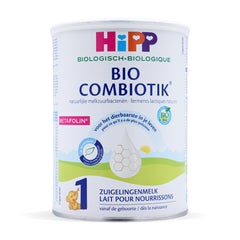

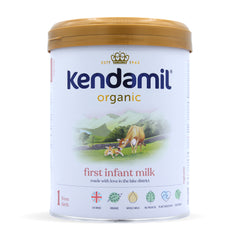
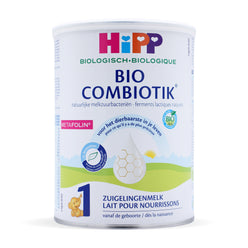
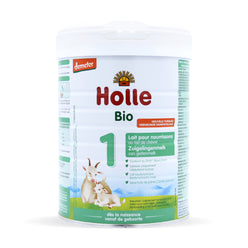
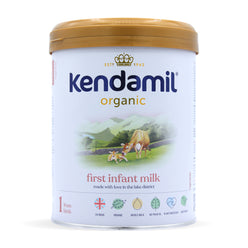

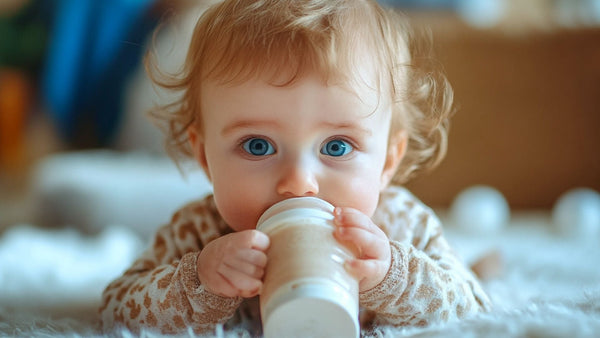




Isidro M -
This reminds me of when my baby kept rejecting the bottle. We tried paced feeding, and it finally worked for us—it made a huge difference.
Cornelius M -
August 16, 2025
This completely changed my perspective on feeding. I always thought simply holding the bottle upright was fine, but learning about paced bottle feeding—holding the bottle horizontally and letting baby set the rhythm—has totally shifted how I view each feeding. And realizing the importance of sterilizing each component before feeding made me appreciate how much small practices can make a big difference in baby’s comfort and health.
Zola Y -
July 19, 2025
We struggled at first with getting the right bottle angle and pace, especially during nighttime feeds. Learning to pace feed and watching for baby’s hunger cues made a huge difference for us. One thing that really helped was using a slow-flow nipple and keeping baby upright for a bit afterward to reduce gas. It’s definitely a learning curve, but once you find what works, it gets much easier.